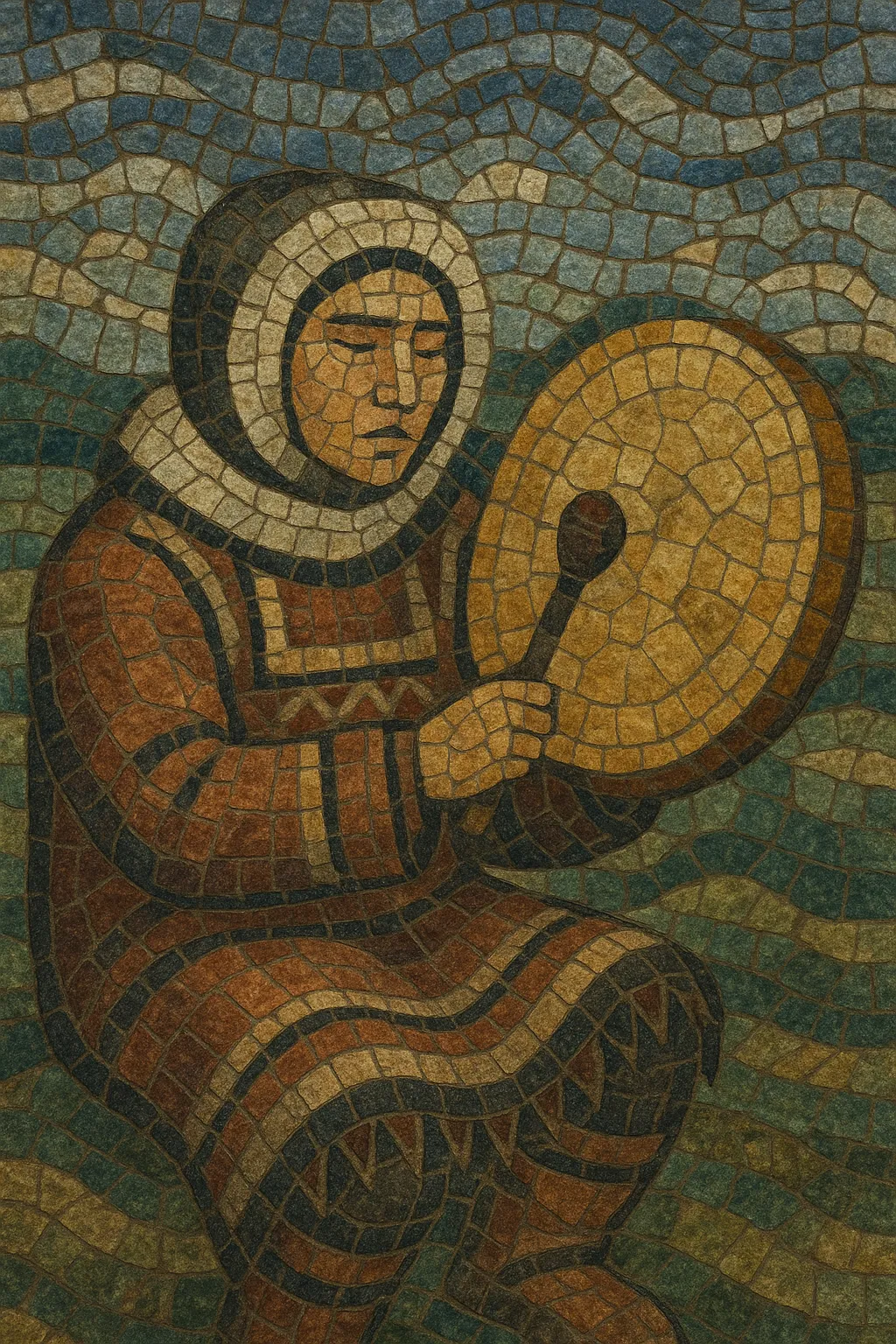Samoyedic folk music is the traditional music of the Samoyedic peoples of northern Siberia—principally the Nenets, Nganasan, Enets, and Selkup—who live across the tundra and taiga of what is now Russia.
It is primarily vocal, monophonic, and text-driven, with melodies that are narrow in range and often shaped by the prosody of the local languages. Free, speech-like rhythms are common in solo genres, while communal pieces can feature steady pulses and call-and-response.
Typical textures include a single, unaccompanied voice; voice plus frame drum (in ritual contexts); and voice accompanied by simple aerophones or jaw harp drones. Melodic organization tends toward pentatonic and modal patterns with flexible intonation, microtonal inflections, and heterophonic ornamentation. Texts reference reindeer herding, seasonal cycles, landscape, and spirit worlds, using both lexical lyrics and vocables.
Performance contexts range from domestic and work settings (lullabies, herding and travel songs) to ceremonial and shamanic practices (healing chants, invocations), and staged folklore ensembles in the modern era.
Samoyedic folk music developed in close relationship with nomadic reindeer-herding lifeways and animist cosmologies across the Arctic and sub-Arctic. Songs served practical functions (lullabies, herding calls, travel songs) and ritual ones (shamanic healing, protective chants, and seasonal observances). Transmission was oral, with repertoire and style learned in family and clan contexts.
European and Russian travelers, missionaries, and ethnographers began to document the music in the 1700s–1800s through written descriptions and, later, early audio technologies. These accounts emphasized solo chant-like delivery, narrow-range melodies, flexible rhythm, and the presence of frame drums and jaw harps.
In the Soviet period, folklore expeditions produced extensive field recordings and transcriptions. State cultural policy also encouraged staged folklore ensembles, which preserved visibility but sometimes standardized vocal timbre, intonation, and form for concert presentation. Despite pressures of settlement, language shift, and modernization, community-based practices persisted in domestic, ritual, and seasonal contexts.
Since the 1990s, cultural revival movements, regional festivals, and local arts centers have supported teaching, archiving, and performance. Field recordings, radio archives, and contemporary world/folk projects have brought Samoyedic vocal aesthetics—free rhythm, modal melody, vocables, and nature-referenced texts—to broader audiences. Today, tradition-bearers, school ensembles, and intercultural collaborations coexist, balancing continuity with sensitive adaptation.


